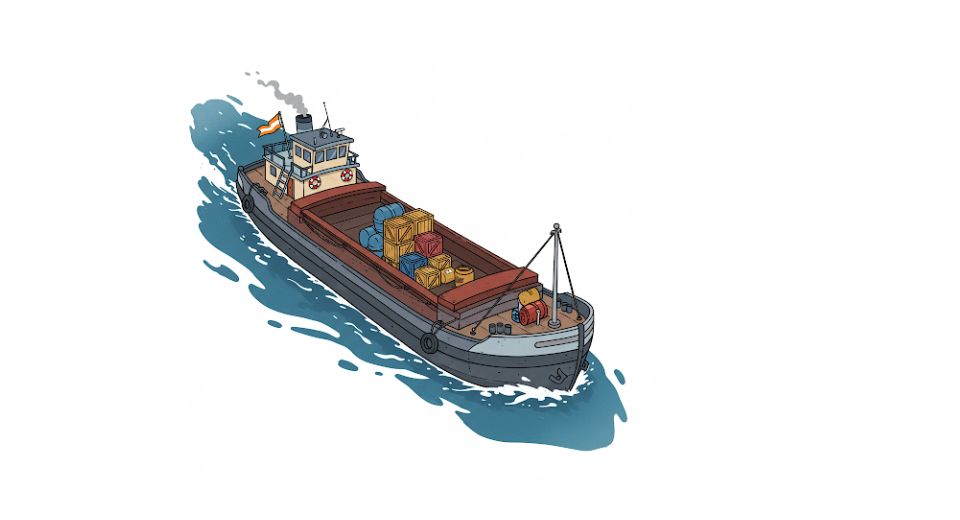
Apr 10, 2025

The latest report by Metastat Insight has studied the changes and trends in the Global Barge Transportation Market and further reports how the sector is taking shape in its alignment with the logistical and infrastructural needs of different industries. Barge transport by its design always acted rather as a very specific yet critical function-moving huge amounts of commodities over inland waterways and coastal routes. Not always as visible as other more glitzy forms of transport, but those who know about supply chains recognize in cargo movement steadiness and capability.
Global Barge Transportation market is estimated to reach $142,058.88 million in 2025 with a CAGR of 3.7% from 2025 to 2032.
The Global Barge Transportation Market works with a type of understated efficiency that has won it a unique space in the logistics ecosystem. Barges offer an assured means of transportation in bulk for the goods through limited interruptions from agricultural produce to industrial materials, or bulk commodities. Nature of barge operation heavily relies on infrastructure and geographical accessibility to rivers, canals, and coastal channels. These waterways, which have been arteries of commerce for centuries, continue to constitute the very arteries of modern-day freight logistics. Besides the reduced wear on public roadways and decreased fuel consumption, what makes barge transport unique is their capability to carry heavy loads with the backing of logistics even in urban and rural economies.
Inland waterways are an easily overlooked but very important venue for keeping pressure off already overburdened roads and rail systems in terms of transport noodle. Barges bring a predictable cadence to the shipping cycle with a capacity to address seasonal peaks and sudden shifts in the supply chain's demands. Reliability, however, did not happen by accident; it is part of the infrastructure planning, operator know-how, and steady investment in vessels and support systems. Stakeholders in the Global Barge Transportation Market include not just logistics providers, but port authorities, agricultural cooperatives, mining operators, and industrial processors, each with unique timelines and lead-times on deliveries.
While goods are transported by "slow barges," as they're called compared to air or rail speed, huge bulk and relatively low operating cost have made them a favorite choice, particularly for goods that are not time sensitive. In addition, the deployment of barges can allows for more flexible routing and scheduling capabilities when integrated into multimodal systems that connect river transport with trucks and rail for final-mile delivery. This is changing the way companies think about freight, not just towards speed but towards reliability and sustainability.
In regions where the waterway infrastructure is well developed, outfitted with locks and facilities for loading/unloading, and well maintained, the barge industry is more or less able to command an ever-relevant voice in today's economy. The flexibility offered by a barge system does provide for much use under pool arrangements whereby other infrastructures get crushed. Industries continue to look at this reasonably adaptable system for shipment that can be depended upon to provide cost-effective movement in tandem with their production cycles. This in turn offers policymakers and planners a challenge, in reassessing water routes that still confer value, so that they can be assured of maintenance or upgrades to cater to the demand for the same.
Global Barge Transportation Market elucidates the back-and-forth interaction between the tradition of the industry and being ahead looking. Operators must weigh the longevity of their fleets against the need for modern compliance and efficiency. Whether silently pushing downriver grain from an inland silo or moving construction materials into a spurting metropolis, barges do things quietly but purposefully. The very essence of barge value lies with the reliability of the service, quietly stitching through waterways across sectors reaching from agriculture to energy.
With this report, Metastat Insight analyzes an industry seldom in the limelight, yet critical in facilitating the international movement of goods, across continents and from production points. This mode of transportation has a network that covers rivers, canals, and coastlines, with unmatched reliability and volume capacity that few transport modes can offer. Although the barge embodies the concept of an anachronistic means of freight transport within global logistics, it finds a way to evolve when called to do so; even amidst automation, speed, and digitalization, it remains steadfast in its position as part of the transportation mix.
Drop us an email at:
Call us on:
+1 214 613 5758
+91 73850 57479